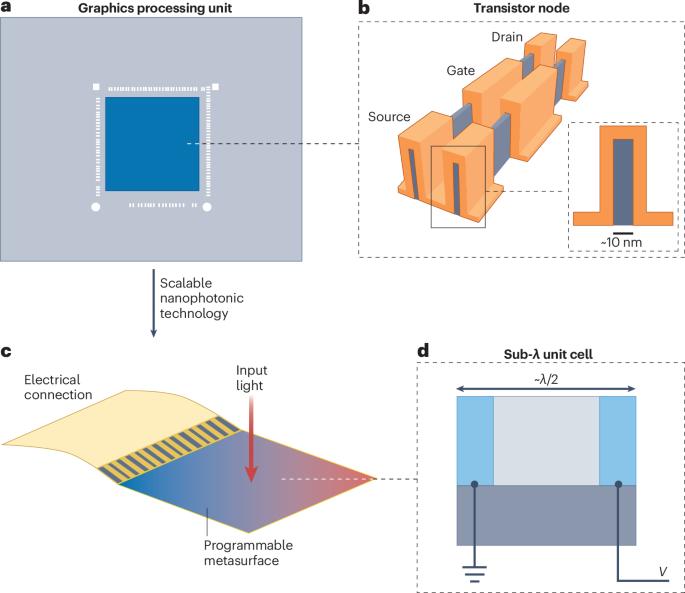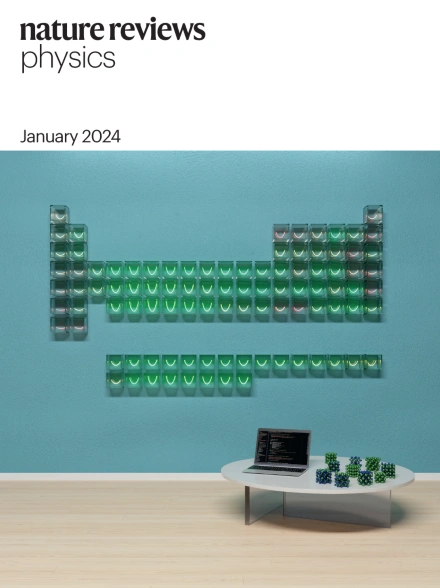未来光子人工智能的可编程元表面
IF 39.5
1区 物理与天体物理
Q1 PHYSICS, APPLIED
引用次数: 0
摘要
光子神经网络(PNNs)具有光子系统固有的优点,如高并行性和低功耗,可以在能量效率,延迟和吞吐量方面挑战传统的数字神经网络。然而,生产可扩展的光子人工智能(AI)解决方案仍然具有挑战性。为了使光子人工智能模型可行,需要解决可扩展性问题。在pnn上实现的大型光学人工智能模型只有在光学计算的优势超过其输入输出开销的成本时才具有商业可行性。在这个视角中,我们讨论了现场可编程元表面技术如何成为实现可扩展光子人工智能加速器的关键硬件成分,以及它如何与当前的数字电子技术竞争。可编程性或可重构性是PNN硬件的关键组成部分,可以实现原位训练,并适应需要微调或迁移学习的非平稳用例。与电子学、3D堆叠和元表面大规模制造的协整将显著提高PNN的可扩展性和功能。可编程元表面可以解决pnn当前面临的一些挑战,并实现下一代光子人工智能技术。可编程元表面可以通过克服关键硬件限制,为可扩展光子神经网络提供一种变革性的方法。本展望探讨了它们在提高能源效率、计算速度和适应性方面的潜力,将它们定位为传统数字人工智能硬件的有前途的替代品。本文章由计算机程序翻译,如有差异,请以英文原文为准。

Programmable metasurfaces for future photonic artificial intelligence
Photonic neural networks (PNNs), which share the inherent benefits of photonic systems, such as high parallelism and low power consumption, could challenge traditional digital neural networks in terms of energy efficiency, latency and throughput. However, producing scalable photonic artificial intelligence (AI) solutions remains challenging. To make photonic AI models viable, the scalability problem needs to be solved. Large optical AI models implemented on PNNs are only commercially feasible if the advantages of optical computation outweigh the cost of their input–output overhead. In this Perspective, we discuss how field-programmable metasurface technology may become a key hardware ingredient in achieving scalable photonic AI accelerators and how it can compete with current digital electronic technologies. Programmability or reconfigurability is a pivotal component for PNN hardware, enabling in situ training and accommodating non-stationary use cases that require fine-tuning or transfer learning. Co-integration with electronics, 3D stacking and large-scale manufacturing of metasurfaces would significantly improve PNN scalability and functionalities. Programmable metasurfaces could address some of the current challenges that PNNs face and enable next-generation photonic AI technology. Programmable metasurfaces may offer a transformative approach to scalable photonic neural networks by overcoming key hardware limitations. This Perspective explores their potential to enhance energy efficiency, computation speed, and adaptability, positioning them as a promising alternative to traditional digital artificial intelligence hardware.
求助全文
通过发布文献求助,成功后即可免费获取论文全文。
去求助
来源期刊

Nature Reviews Physics
Multiple-
CiteScore
47.80
自引率
0.50%
发文量
122
期刊介绍:
Nature Reviews Physics is an online-only reviews journal, part of the Nature Reviews portfolio of journals. It publishes high-quality technical reference, review, and commentary articles in all areas of fundamental and applied physics. The journal offers a range of content types, including Reviews, Perspectives, Roadmaps, Technical Reviews, Expert Recommendations, Comments, Editorials, Research Highlights, Features, and News & Views, which cover significant advances in the field and topical issues. Nature Reviews Physics is published monthly from January 2019 and does not have external, academic editors. Instead, all editorial decisions are made by a dedicated team of full-time professional editors.
 求助内容:
求助内容: 应助结果提醒方式:
应助结果提醒方式:


